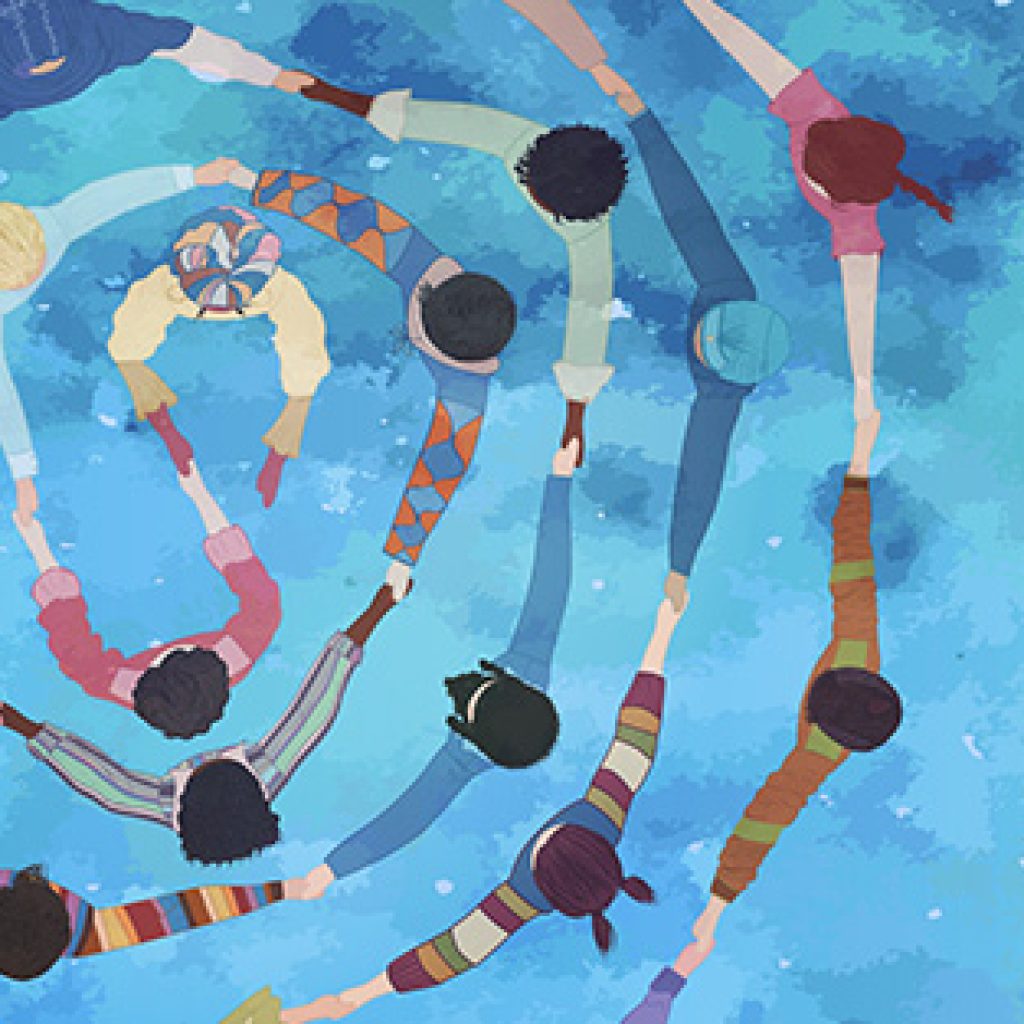Mental Health Awareness Month: 6 Reasons Why Language Matters
Week 3 of Mental Health Awareness Month is focused on promoting acceptance and compassion surrounding mental illness. As part of this week’s message, SAMHSA notes that each of us plays a role on one another’s mental wellness journey. The language we use to talk about mental health is a fundamental consideration when we talk about how to promote acceptance and compassion. The language we use can either promote a sense of compassion, inclusion and support or it can be alienating and result in a person feeling judged, isolated, and alone.
The language used to describe mental health has evolved over time and reflects societal attitudes and understanding (or lack thereof) of mental health conditions. For example, in the ancient and medieval periods, mental health issues were attributed to demonic possession, witchcraft, or moral failings. Terms like “possessed by evil spirits” or “divine punishment” were used to describe mental health issues. Thankfully, over time our understanding and our language has evolved.
In the 19th and 20th centuries mental health became increasingly medicalized. Terms such as “madness”, “insanity” or “mental disorders” were used to describe various conditions. In the mid-20th century, we saw a significant shift when the Diagnostic and Statistical Manual of Mental Disorders (DSM) was introduced which helped to standardize diagnostic criteria. Also worthy of noting during this time was the movement to deinstitutionalize people who were experiencing mental health challenges, and the value of providing community-based support.
Today there is a focus on the recognition and importance of person-first language. We know and understand that a person is not their diagnosis, so rather than using terms like “schizophrenic”, we say “a person living with schizophrenia”. Another example is “a person with a mental health condition”, or “a person experiencing depression” which is language that is more compassionate and inclusive. Language plays a crucial role in mental health because it shapes our understanding, perceptions, and attitudes toward mental health conditions and the individuals experiencing them.
Here are 6 important reasons why language matters:
1. Language helps to reduce stigma
Stigmatizing language perpetuates negative stereotypes and attitudes about mental health conditions, contributing to the marginalization and discrimination faced by individuals with mental illnesses. Here are some examples of stigmatizing language: “Crazy” or “insane”, “Psycho” or “nutcase”, Mental patient” or “crazy person”. These insulting terms dehumanize and belittle individuals with mental health conditions, reinforcing negative stereotypes and portraying them as dangerous or unpredictable.
2. Language promotes empathy and understanding.
Language that is compassionate, non-judgmental, and person-centered helps foster empathy and understanding. It acknowledges the experiences and challenges faced by individuals with mental health conditions, creating an environment where they feel heard, validated, and supported.Examples of language that promoted empathy and understanding include “Person with a mental health condition” or “individual experiencing a mental health challenge”. These terms emphasize the personhood of individuals, recognizing that their mental health condition is just one aspect of their identity. The terms “Mental health condition” or “mental illness” acknowledge that mental health challenges are legitimate medical conditions, similar to physical health conditions. The phrases “Mental well-being” or “emotional wellness” promote a holistic understanding of mental health and encourage a focus on maintaining overall well-being, and the inter-connected nature of physical and mental health.
3. Language can encourage help-seeking behavior.
The way we talk about mental health can influence individuals’ willingness to seek help. Using language that normalizes seeking support, emphasizes the importance of mental well-being, and highlights how the effectiveness of treatment can encourage individuals to reach out for assistance when needed. The terms “Supportive care” or “therapeutic interventions” emphasize the importance of compassionate and evidence-based care for individuals with mental health conditions. In addition, the phrases “Recovery” or “mental wellness journey” highlight the potential for improvement, growth, and recovery in individuals with mental health conditions. It also helps to highlight the lifelong and ever-changing nature of mental wellness.
4. Language empowers people.
Language can either reinforce feelings of shame, hopelessness, powerlessness or it can empower individuals to take control of their mental health. Strength-based and recovery-oriented language focuses on resilience, personal agency, and the potential for growth and recovery, fostering a sense of empowerment and self-efficacy. Terms such as “Resilience” or “strength” recognize the inner strength and capacity for growth in individuals facing mental health challenges. Also, the terms “Managing symptoms” or “developing coping strategies” recognize that individuals can actively participate in their own mental health management and develop effective strategies to navigate their challenges. Lastly, the expression “Open up a conversation” or “increase awareness” encourages dialogue, education, and understanding about mental health.
5. Language helps to improve communication with professionals.
Clear and accurate language is vital when a mental health provider and client are communicating. By using precise terminology and describing symptoms or experiences can help facilitate effective communication, accurate diagnosis, and appropriate treatment planning. For example, a person who is experiencing overwhelming worry and fear, a rapid heart rate, and shortness of breath needs to be able to communicate the array of symptoms (physical, mental, emotional, behavioral) as all of these symptoms are important for a healthcare provider to be aware of when it comes to diagnosing and treating what may be going on with the individual.
6. Language helps to challenge misconceptions.
Language has the power to challenge misconceptions and correct misunderstandings about mental health conditions. By using accurate and evidence-based language, we can help educate others, dispel myths, and promote a more informed and nuanced understanding of mental health. Phrases such as “Emotional distress” or “challenging emotions” convey empathy and understanding without labeling or pathologizing individuals’ emotional experiences.
Overall, using inclusive, respectful, and person-centered language in discussions about mental health contributes to a more supportive, empathetic, and inclusive society. It recognizes the dignity and worth of individuals with mental health conditions, encourages help-seeking behavior, and promotes mental well-being for all. It’s important to be mindful of the language we use and to replace stigmatizing terms with more respectful, accurate, and compassionate language that promotes understanding, empathy, and inclusivity. There are efforts being made to promote mental health as a continuum of wellness rather than a binary concept of “normal” or “abnormal”. Language will continue to evolve, and the emphasis is on reducing stigma, promoting understanding, and using respectful language. When we use open and compassionate language around mental health issues, we empower ourselves and encourage others to find the help they need.
Resources
Find Support for Issues with Mental Health, Drugs, or Alcohol
Mental Health Awareness Month Toolkit
Words Matter-Terms to Use and Avoid When Talking About Addiction
References
DeFalco, A. (2005). Middle English Mental Illness Terminology. Carol Percy’s homepage. https://cpercy.artsci.utoronto.ca/courses/6361defalco.htm
Mental Health First Aid. (2022, May 6). Use person-first language to reduce stigma. Mental Health First Aid USA. https://www.mentalhealthfirstaid.org/2022/04/use-person-first-language-to-reduce-stigma/
Rössler, W. (2016, July 28). The stigma of mental disorders. EMBO Reports. https://www.ncbi.nlm.nih.gov/pmc/articles/PMC5007563/
Substance Abuse and Mental Health Services Administration. (2023, April 24). Mental Health Awareness Month toolkit. SAMHSA. https://www.samhsa.gov/programs/mental-health-awareness-month/toolkit
Blog Post Tags:
Related Blog Posts
Related Learning Labs
Related Resources
.
- Buscar Tratamiento de Calidad para Trastornos de uso de Sustancia (Finding Quality Treatment for Substance Use Disorders Spanish Version)
- Finding Quality Treatment for Substance Use Disorders
- Focus On Prevention: Strategies and Programs to Prevent Substance Use
- Monthly Variation in Substance Use Initiation Among Full-Time College Students
- The National Survey on Drug Use and Health (NSDUH) Report: Monthly Variation in Substance Use Initiation Among Adolescents








